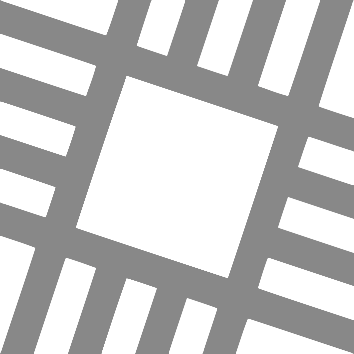Lines of 4 grid rows
The cyan colored rows are intended to be the areas in between your writing, but they can serve as lines themselves when you make fractions and things that shift into these half-rows. You can think of the blue/white rows as writing double-spaced on every other row of plain graph paper.
You mainly write your letters withing the two white grid rows, with capitals using the full height of the two rows and the lowercase using a height you are comfortable with. There is a grid line that runs through the middle of the row that you use to line up your operators ("+", "-", "=", etc.).

The logical "row" includes the cyan grid row above and below the two white rows. These serve to reserve room for letter descenders, subscripts, superscripts, and other things that extend slightly above the capital height and below the baseline.
When you want to do a large fraction, you simply draw the fraction bar along the center line of the current row and shift the numerator and denominator a half row up and down. They are written in the cyan rows following the same guide lines except their ascender/descender areas are the white grid rows above and below them.

The small grid can be used to make simple plots or small diagrams for illustration.

Dot grid
There is a dot grid aligned with the line spacing, which is every 4 small grid squares. This can be used as an indentation guide to keep lines of text neatly lined up, or used to easily draw lines to section off parts of the page.

Center line
This is intended to keep you from letting your writing sprawl across the page for work that doesn't need to be wide like many simple homework problems. Continue in the second column when you reach the bottom.
You could also use it to separate parts of the problem, like putting the diagrams and plots or given values to one side and the math work on the other. The line is also made to be light enough so that you can also ignore it and use the full page width.

